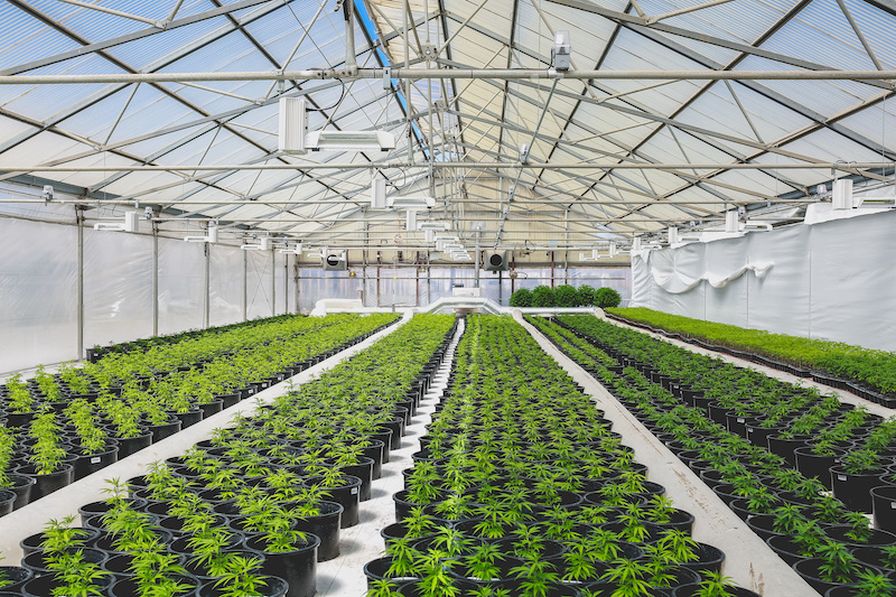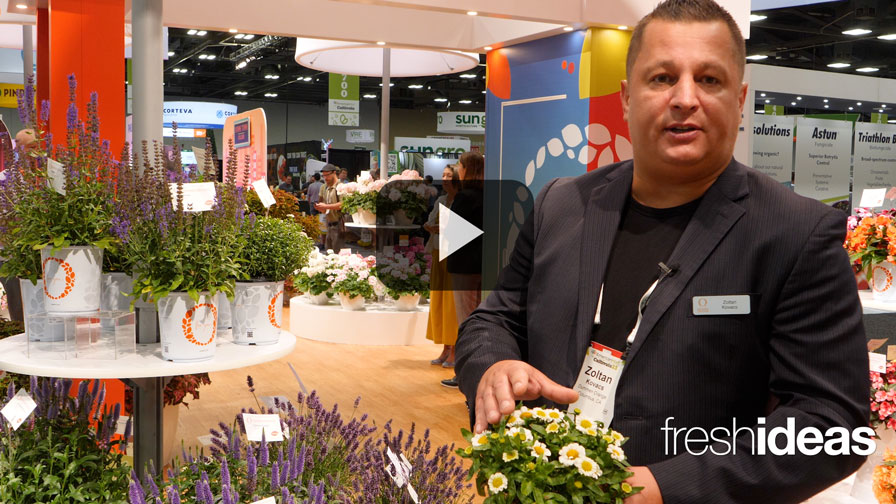7 Environmental Parameters That Can Make or Break Cannabis Crop Success
 The longer a crop spends outside its optimal environmental growing parameters, the more likely it is to suffer from pests, diseases, and low yields. Since cannabis producers are limited in the types of pest control products they can use, growers must optimize plant health by closely managing the cultivation environment.
The longer a crop spends outside its optimal environmental growing parameters, the more likely it is to suffer from pests, diseases, and low yields. Since cannabis producers are limited in the types of pest control products they can use, growers must optimize plant health by closely managing the cultivation environment.
As a full sun, warm-weather loving crop, plant health can fall out of balance if cannabis is chronically exposed to cold, humid, excessively hot, or dry conditions.
Fortunately, controlled-environment cannabis growers have many tools and techniques available to help them maintain the optimal growing conditions for a healthy crop.
Are your environmental controls on point? If not, use these target ranges to help find the sweet spot for efficient cannabis production.
Temperature
Keep nighttime temperatures at 68 to 70°F and aim for maximum daylight temperatures of 85°F. Cooler temperatures will encourage root pathogens, and beyond 90°F, the plant goes into survival mode. Avoid extreme temperature fluctuations since they promote crop problems such as powdery mildew. Aim for a maximum difference of 10 degrees between the coolest and warmest points of the day.
Relative Humidity
Cannabis grows well in humid environments, but it’s not preferable for flower production. Cannabis plants generally thrive in environments of 55% to 80% relative humidity (RH) in the vegetative stage and 50% to 65% RH during flowering.
Light Intensity
Aim for a daily light integral (DLI) of at least 30, or an average light intensity of 300 to 700 micromoles during vegetative growth and up to 1,200 micromoles during flower. Some varieties will thrive on higher light levels, but it can prove detrimental to others. Acclimatization is vital to growing a successful crop under high light; incrementally expose plants to stronger light over a seven- to 10-day period.
 CO2
CO2
A good rule of thumb for achieving optimal carbon dioxide levels is to increase CO2 in lockstep with light intensity. During vegetative growth, supplement the air with up to 700 ppm of CO2 and up to 1,200 ppm in flower. Beyond that, temperatures would need to increase to ensure the efficient use of CO2 at higher levels.
Water Temperature
Irrigation water temperatures of 65 to 68°F seem ideal for cannabis production. Warmer temperatures can encourage water-borne pathogen infections, so it’s vital to ensure proper oxygen levels at all times; 8 ppm is a good place to start. Skip the air stones and consider nano-infusion since the oxygen generated from this technology persists in suspension much longer than standard air stone bubbles.
Nutrient Strength
Try to achieve an EC of .75 to 1.0 for seedlings and rooted cuttings and up to 2.0 EC for vegetatively growing plants. During flowering, growers typically stay under 3.5 EC. There are no universally accepted standards for growing cannabis yet, so the optimal range will vary depending on substrate, grower technique, and environment.
Airflow
Build a facility that can make at least five air exchanges per hour, with more in humid environments. Too much airflow may create nutrient uptake issues and encourage spider mite infestations, while too little will place the crop at an increased risk of fungal infections. Avoid pointing circulation fans directly at the plants since mechanical damage from excessive wind will negatively affect yields.
“To measure is to know,” and this holds true for cultivating cannabis as well. Accurate and timely data is key to managing these seven optimal growing parameters.
A sophisticated environmental management system will automatically measure and adjust equipment to maintain the ideal growing conditions. However, the cultivator still needs to establish the parameters and program the system to hold them. Automation doesn’t negate the need for the grower to be hyper-vigilant of the environment. It’s simply a tool to help them manage it more precisely.
Fortunately, several options exist for measuring environmental data that don’t require an investment in automated equipment and technology. Economical hand-held devices measure all of the above parameters and are easy to use. Several companies sell meters that measure multiple values simultaneously, like temperature/humidity/wind speed or EC/pH/water temperature.
Consider purchasing meters for each grow room or greenhouse bay to eliminate wasted time chasing down this equipment every time it’s needed. Ensure that the periodic calibration of these meters is part of your grow team’s weekly tasks. Faulty sensors can prove frightfully expensive if a grower adjusts environmental parameters based on false information.
Make it easy for your team to purchase replacement probes and calibration and storage solutions. Some meters, like pH meters, will fail to give an accurate reading if the glass bulb surrounding the sensor is allowed to dry out. Keep your measuring instruments accessible, calibrated, and properly stored, and ensure their regular use is part of a grower’s typical work day.
The secret to growing great cannabis lies in the cultivator’s ability to provide the plant with what it needs, when it needs it. Establishing the plant’s requirements is the first step to creating the perfect growing environment. If your crop isn’t up to par, review these seven growing parameters. You may find that a simple tweak is all it takes to bring your crop back in line with your expectations.
Note: Ryan Douglas, the author of this article, will be speaking at the 2022 GROW Executive Summit on trends shaping the future of supply chain management, as well as why it’s important to put your talent first. To learn more and to register, go to GrowExecutiveSummit.com.









